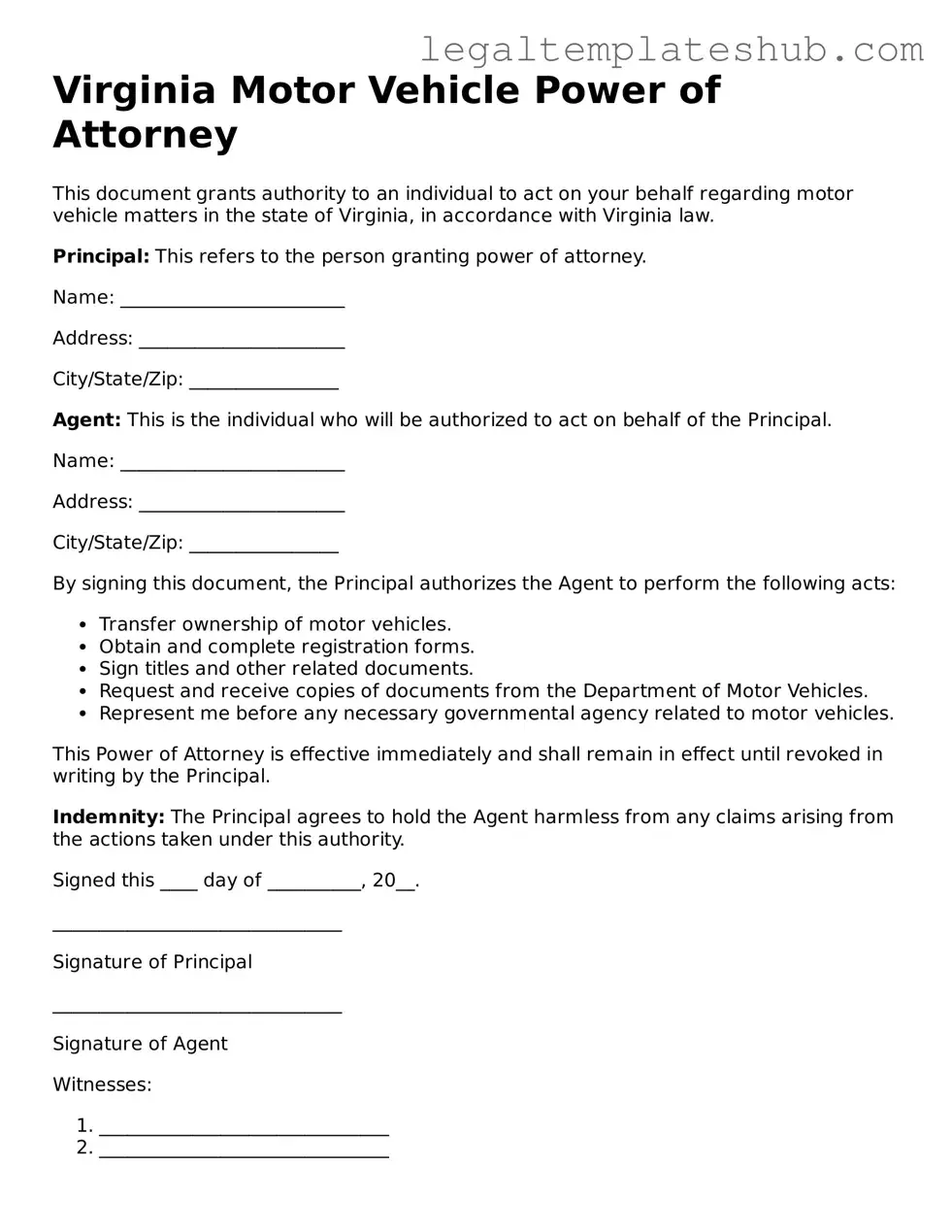Instructions on Filling in Virginia Motor Vehicle Power of Attorney
Completing the Virginia Motor Vehicle Power of Attorney form is a straightforward process. This document allows you to designate someone to act on your behalf regarding motor vehicle transactions. Follow these steps carefully to ensure the form is filled out correctly.
- Begin by downloading the Virginia Motor Vehicle Power of Attorney form from the Virginia Department of Motor Vehicles website or obtain a physical copy from a DMV office.
- In the designated section, enter your full name, address, and contact information. Ensure that all details are accurate to avoid any issues.
- Next, provide the name and contact information of the person you are appointing as your agent. This individual will have the authority to handle motor vehicle matters on your behalf.
- Clearly specify the powers you are granting to your agent. This may include the ability to sign documents, make decisions regarding the vehicle, or transfer ownership.
- Sign and date the form at the bottom. Your signature must match the name you provided at the beginning of the form.
- Have the form notarized. A notary public will verify your identity and witness your signature, which is often required for the form to be valid.
- Make copies of the completed and notarized form for your records and for the agent you appointed.
Once the form is completed, you can submit it to the appropriate authorities as needed. Keep the copies in a safe place, and ensure your agent is aware of their responsibilities.
